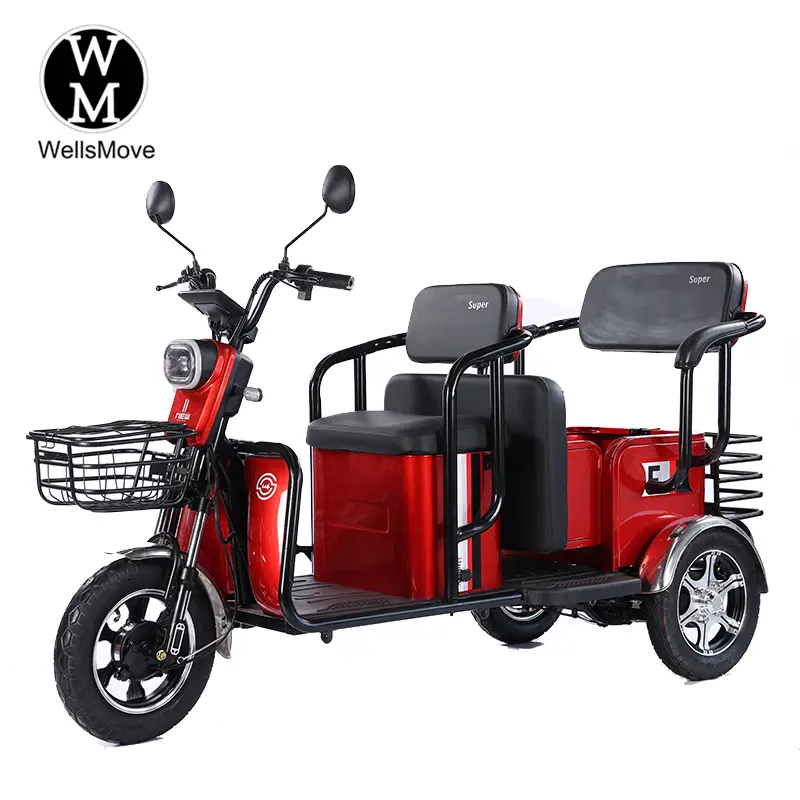Choosing the Right Mobility Scooter for Seniors Based on Frequency of Use
I. Introduction: Frequency of Use Determines the Core Logic of Model Selection
When choosing a mobility scooter for seniors, it’s never about “more expensive, better” but rather “the more suitable, the better.” According to data from the China Research Center on Aging, mobility scooters for people over 60 can be clearly divided into three usage categories: occasional use (1-3 times per week), frequent daily use (1-2 hours per day), and frequent long-distance travel (2 or more times per week). Different usage frequencies correspond to different requirements for battery life, durability, and maintenance costs. Choosing the right model can improve both travel safety and user experience.
II. Scenario 1: Occasional Use (1-3 times per week, ≤30 minutes per trip)
Core Requirements: Lightweight and Easy to Store + Low Maintenance Cost
This type of use primarily involves strolling around the neighborhood, shopping nearby, and attending community events. The vehicle’s usage intervals are long, so addressing storage convenience and battery life is crucial.
1. Recommended Models and Reasons for Suitable Use
Folding Electric Wheelchairs: For example, the Yuyue Foldable (20km range, 18kg). Equipped with a one-touch folding function, it can be tucked into closet crevices. Its lithium battery can retain 70% charge after three months of inactivity, making it particularly suitable for elderly people living alone.
Lightweight Three-Wheeled Wheelchairs: The Kailaibao Foldable (6,880 yuan) (10.5A lithium battery + brushless motor) weighs only 16.8kg, making climbing stairs effortless. Its 350W motor is powerful enough for handling flat roads, and its medical device certification ensures safety.
2. Must-See Specifications and Pitfalls to Avoid
III. Scenario 2: Daily High-Frequency Use (1-2 hours per day, ≤10km per trip)
Core Requirements: Stable Range + Safety and Durability + Easy Operation
For scenarios like picking up grandchildren, shopping across neighborhoods, and commuting for morning exercises, a vehicle with all-weather reliability is essential. Safety features and range degradation are key considerations.
1. Vehicle Recommendations by Scenario
For urban, flat roads: Reading D80 (SUV style, 100-150km range). Equipped with ABS and a reversing camera, it meets the legal dimensions of 3500mm × 1500mm × 1700mm and has passed the GB/T18385 crash test, making it suitable for daily child transport.
For areas with many slopes: Hongri U8 (metal body with anti-slip function). Its 800W motor can handle 15° slopes, and its electromagnetic brake response time is ≤0.5 seconds. Elderly users have tested it with no rollover risk during sudden braking in rainy weather.
For two people traveling together: Compaxing L58 two-seater (7280 yuan, 100-mile range). It features a 45cm wide seat with an adjustable armrest and a rear storage basket that can accommodate two shopping carts, making it suitable for elderly couples traveling together.
2. Key Considerations for High-Frequency Vehicle Use
Range Redundancy Principle: For daily one-way trips of 5km, choose a vehicle with a range of 50km or more (lithium battery range decreases by 30% in winter), such as the Jinpeng T90 (50km range, available with both lead-acid and lithium batteries).
Safety Configuration Priority: Electromagnetic brakes > mechanical brakes. Vehicles with night-time reflective strips and LED headlights (such as the Yadi C13) improve nighttime visibility by 60%.
Maintenance Ease: Choose a brand with a motor warranty of 2 years or more (such as BAIC and BYD). Preferably, a nearby repair station is recommended.
IV. Scenario 3: Long-Distance, High-Frequency Use (≥2 times per week, 10-30km per trip)
Core Requirements: Long Range + Powerful Power + Road Compliance
For scenarios like interprovincial visits to relatives and suburban tourism, vehicle performance requirements approach those of a micro electric vehicle, requiring a balance between range, hill-climbing capability, and regulatory compliance.
1. Performance Model Recommendations
Long-Distance Comfort Model: Foton Low-Speed Electric Vehicle (120km range, 3kW motor power). Featuring an automotive-grade shock absorption system and an adjustable seatback angle of 110°, it can drive continuously for two hours without back pain and complies with the new “maximum speed ≤ 70km/h” regulation.
Mountain-Friendly Model: Zhenbang Folding Model (800W motor + 60V30A lithium battery). It has a range of 70km and can handle 20° slopes. It folds and fits in the trunk of an SUV, making it convenient for children and parents to travel with.
All-Round Flagship Model: BYD Micro Low-Speed Vehicle (150km range, intelligent control system). It supports fast charging (80% charge in 30 minutes), is equipped with an LCD screen, and features a low-speed mode. Drivers aged 60 and above with an F license are eligible.
2. Key Verification Items for Long-Distance Driving
Compliance Documents: Require the merchant to provide 3C certification and vehicle certificates to verify compliance with the “Technical Requirements for Pure Electric Passenger Vehicles” test to avoid road fines for vehicles without these certifications.
Battery and Charging: Prioritize models with a battery energy density ≥70Wh/kg (such as Ziguang Motor models). Use a smart charger (with automatic power-off to prevent overcharging) to extend battery life to over three years.
Emergency Features: Confirm the presence of a spare tire and emergency brake. Some high-end models (such as the Bubuxian T8) feature tire pressure monitoring for added peace of mind during long-distance driving.
V. Export Adaptability: Additional Tips for Selecting Models for Global Markets
Pay attention to the specific requirements of the target market:
European and American markets: CE certification and ISO13849 safety standards are required. Licenseable models such as the Reading D80 and Jiayuan minivan are recommended. Range ratings must use the “WLTP” operating cycle standard.
Southeast Asian Market: Prefer models with a waterproof rating of IPX5 or higher (such as the Southern Ant), equipped with insect screens and a sun-proof roof, suitable for hot and rainy climates.
Battery Policy: A UN38.3 battery transportation report is required for export. Lithium-ion battery models are easier to pass customs inspection than lead-acid batteries.
Post time: Oct-29-2025




